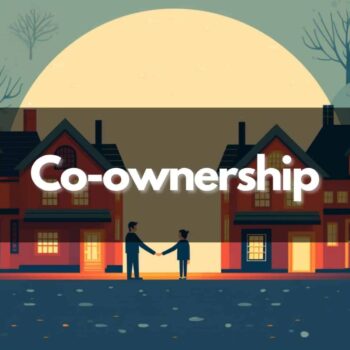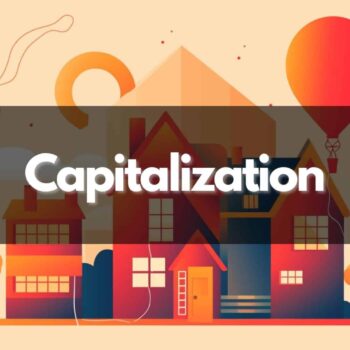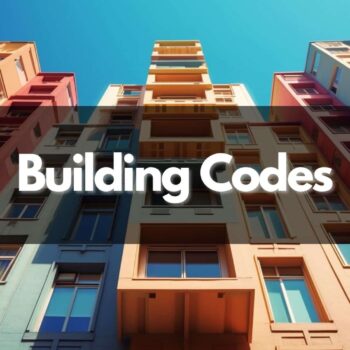A reverse mortgage is a valuable financial tool that helps older citizens with financial planning during retirement. These loans are designed for seniors who want to benefit from the home equity they accrued through the years. This type of mortgage allows the borrower to obtain cash by converting a portion of their equity without selling their property.
These mortgages can be difficult to understand and might not be suitable for everyone. Since a reverse mortgage uses the equity in the borrower’s property, there are many risks involved. Understanding how reverse mortgages work is essential for a real estate exam. In this post, I’ll explain reverse mortgages in an easy way with the help of examples and more!
What Is a Reverse Mortgage?
A reverse mortgage is a home loan that allows the borrower to get cash against the value of their property. With this mortgage, the borrower doesn’t pay back the amount as long as they live in that property. The loan amount can be a lump sum, monthly income, or whenever the borrower needs cash. The interest and principal are repaid only when the borrower moves from the house, sells it, or dies.
The amount the borrower obtains as a loan is equivalent to the equity in their home. The equity is the value of the property minus any outstanding loan balances against it. As the homeowner grows old, the value of equity plays a vital role in helping the homeowner lead a comfortable life. The following are the main features of a reverse mortgage:
- In most cases, mortgages are provided to people 62 years or older. However, some lenders also offer reverse mortgages to borrowers aged 55 and above.
- The lender doesn’t take ownership, and the borrower remains the homeowner.
- There are no regular mortgage payments required.
- The borrower is protected if the housing market declines.
- The borrower can choose from several disbursement options.
- The homeowner should still pay the property taxes and home insurance.
- The homeowner or borrower must also maintain the home in good condition.
How do Reverse Mortgages Work?
Reverse mortgages work in an opposite or reverse way as compared to traditional mortgages. In a traditional mortgage, the buyer gets money to buy a home and makes regular monthly payments to the lender. On the other hand, with a reverse mortgage, the lender pays the homeowner or borrower. The most important point that makes reverse mortgages different from other mortgages is that title to the home remains in the borrower’s name.
When the homeowner takes a reverse mortgage, the interest and principal are added to the mortgage balance every month. This means that the outstanding loan balance grows monthly, and the borrower’s home equity decreases. The borrower can receive funds depending on these factors:
- Age
- Type of reverse mortgage
- The appraised value of the property
- Current interest rates
- Financial assessment
The borrower’s financial assessment includes the homeowner’s willingness to pay home insurance and property taxes. To obtain a reverse mortgage, the borrower still has to pay these and maintain the house in good condition. Generally speaking, the older the homeowner, the higher the amount of loan they can obtain.
Reverse Mortgage vs. Home Equity Line of Credit vs. Home Equity Loan
A traditional mortgage is also called a forward mortgage when it is compared to a reverse mortgage. Here we will compare reverse mortgages with Home Equity Loan and HELOC. The following are the key differences between these mortgages:
| Features | Reverse Mortgage | Home Equity Line of Credit | Home Equity Loan |
| Age | 62 years or older | No age restriction | No age restriction |
| Disbursement of funds | Lump sum, line of credit, annuity-like payment | Line of credit as needed | Single Lump sum payment |
| Homeownership | Must own the home with a small outstanding mortgage balance | At least 20% equity required | At least 20% equity required |
| Loan payments | No payments until the borrower moves from home, sells it, or passes away. The outstanding loan includes interest and principal. | Interest is paid only at the time of withdrawal. | Repay monthly payments, which include interest and principal |
| Loan limit | Based on the borrower’s home value, age, and interest rate | Up to 85% of home value minus the outstanding mortgage | UP to 85% of home value minus the outstanding mortgage |
| Minimum Credit Score | No minimum credit score | 620 | 620 |
| Interest rate | Fixed or variable | Variable | Fixed |
| Ongoing fees | 0.5% of the mortgage, which includes servicing fees, interest charges, and mortgage insurance premiums | Some lenders may charge transaction fees and annual fees | None |
| Closing costs | 2% of the loan amount for mortgage insurance, additional fees, and up to $6000 of the loan amount | 2% to 5% of the loan amount | 2% to 5% of the loan amount |
Types of Reverse Mortgages
Reverse mortgages are divided into three categories which are as follows:
Home Equity Conversion Mortgages (HECM)
HECM is the most common type of reverse mortgage. This is the only federally insured reverse mortgage. It is backed by HUD (Housing and Urban Development). The HECMs are available only through lenders authorized by the Federal Housing Administration (FHA) to issue the loans.
These loans are more expensive as they have high up-front costs, but there are no income limitations or medical requirements. The higher the equity, the higher the loan amount is. Once the loan is provided, the borrower can choose either monthly cash advances, credit lines, or advances for a specific time.
Proprietary Reverse Mortgages
The government does not back proprietary reverse mortgages; instead, they are issued by private lenders. These loans are also available for borrowers younger than 62. With these loans, the lower the mortgage balance, the more funds the homeowner receives.
The payment system is similar to HECM; the borrower can choose either to receive a lump sum or monthly payments. These loans offer a higher amount than HECMs. This means that the borrower can get more of the equity through the proprietary reverse mortgages than HECMs.
Single-Purpose Reverse Mortgages
Single-purpose reverse mortgages are the cheapest options available for reverse mortgages. These mortgages are offered by local, state, and non-profit agencies. These mortgages have lower interest and fees for single-purpose reverse mortgages than HECMs. However, since these loans are not very common, they aren’t available in every state.
Reverse Mortgage Examples
Example 1: Suppose David owns a home worth $500,000, which is his primary residence. David and his spouse are 70 years old, and they live alone. Since David is retired now, it is becoming difficult for him to meet the daily expenses with his retirement income only. He then decides to get a reverse mortgage against his equity. The following are the details for the reverse mortgage David obtains:
- Property value: $500,000
- Property type: Single-family home
- Outstanding mortgage: $0
- Upfront cash: $148,330
- Line of credit: $50,000
- Monthly advance: $1,249
- Fees and costs: $19,370 per month
On the other hand, if David wants to obtain a lump sum, he can get as much as $247,170. However, David receives monthly income against his equity to meet his monthly expenses. Since he doesn’t have any heir to his property, he isn’t worried about his equity in the home.
Frequently Asked Questions
What are the Requirements for Reverse Mortgages?
The qualifications of reverse mortgages vary from lender to lender. But the main criteria are as follows:
- Age requirement
- Residency requirement
- Housing counseling requirement
- Mortgage balance
- Debt
- Condition of the home
According to the age requirements for HECM, the borrower must be 62 or more. However, a few other reverse mortgages provide loans to people aged 55 or more. The residency requirement means that the borrower’s home must be the primary residence, which means that the borrower must live there most of the time of the year. Plus, these mortgages require that the homeowner must own the home completely or should have paid off a major portion of the mortgage. Lastly, the home must be in good shape to obtain a reverse mortgage.
How to Know the Amount that the Homeowner is Eligible for?
The following is the amount that a homeowner is eligible for according to their age:
- 60 to 70 years: 45% of the home value
- 71 to 75 years: 50% of the home value
- 76 to 80 years: 55% of the home value
- Above 80 years: 60% of the home value
Who Should Have a Reverse Mortgage?
A reverse mortgage is a valuable tool for homeowners. Generally speaking, a reverse mortgage is a good option when:
- The borrower doesn’t plan to move out of the home soon
- The borrower and their spouse are 62 years or older
- The homeowner or borrower can pay property taxes and homeowners insurance and carry on home maintenance
- The value of the home is increasing considerably. This means that the borrower will still have equity in the house after taking a reverse mortgage.
In the end, the borrower must know that by getting a reverse mortgage, their equity in the home will start decreasing. So, if the borrower has sentiments attached to the home, a reverse mortgage is not a good option.
What Is the Disadvantage of a Reverse Mortgage?
The biggest disadvantage of a reverse mortgage is that the equity decreases. When the homeowner obtains cash against the equity in their home, it uses the equity, which decreases the overall worth of the property. So, if the homeowner plans to transfer their home’s equity to their heirs, it won’t be possible if, in the end, no equity remains. Another disadvantage includes that the borrower must still pay taxes and insurance on their home. Insurance premiums and other fees are added to the monthly outstanding loan amount.
What are the Payment Options with a Reverse Mortgage?
With a reverse mortgage, the homeowner can get payments in different forms. The lender can disburse payments in the following ways:
- A full or partial lump sum
- Monthly payments till a defined tenure
- A growing line of credit
- Combination of any of these
The borrower can choose any of these payment options according to their preference.
What Happens to the Reverse Mortgage if the Borrower Dies?
A reverse mortgage becomes due after the borrower passes away. In this case, the heirs must pay their funds’ outstanding balance. They can also refinance the home to pay off the reverse mortgage. If any of these are not done, the lender will have to sell the house to obtain the loan amount from the reverse mortgage.
What are the Alternatives to Reverse Mortgages?
If the borrower needs a loan and doesn’t want to use their home equity, they must consider other alternatives. For instance, the homeowner can consider these options:
- Sell the house and buy a cheaper one
- Cross-lease or subdivide the extra space on your property
- Rent out the home
- Cut back on other expenses
What to Know for the Real Estate Exam
Reverse mortgages are financial tools that allow homeowners aged 62 or more to convert their home equity into cash. These loans are beneficial if the homeowner’s financial situation deteriorates and daily expenses increase. Reverse mortgages allow homeowners to fund a better retirement. The main advantage of these loans is that the homeowner continues to live in their home as long as they want. Besides that, no regular payments are required, and the total loan amount, including interest, is repayable if the homeowner sells the property, moves anywhere else, or passes away. There are more Real Estate Definitions that you must learn before attempting a real estate exam.











